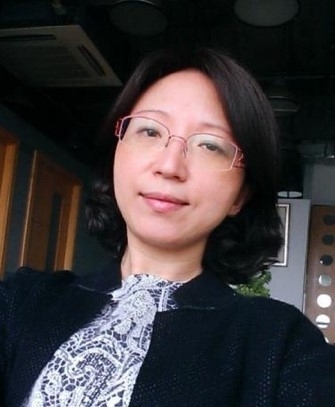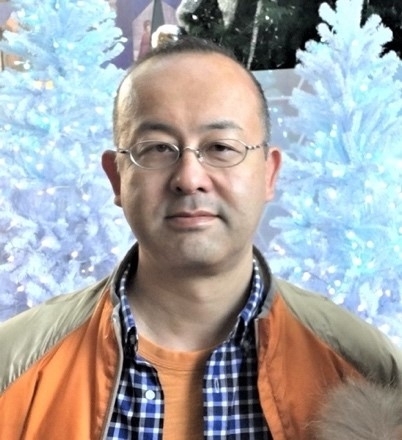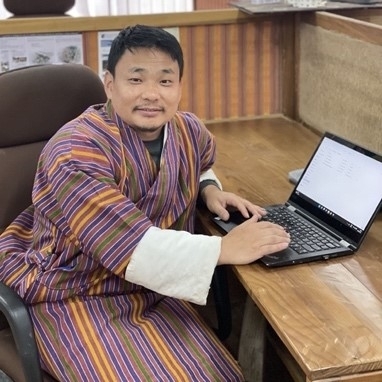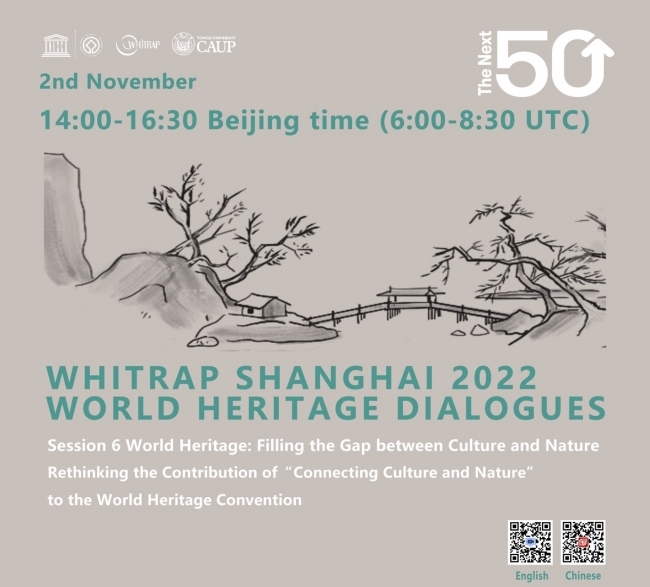| Preview | 6th WHITRAP World Heritage Dialogue |
| PublishDate:2022-10-24 Hits:7835 |
6th WHITRAP SHANGHAI World Heritage Dialogue World Heritage: Filling the Gap between Culture and Nature
Rethinking the Contribution of “Connecting Culture and Nature”
to the World Heritage Convention
Wednesday 2 November 2022
Online 14:00-16:30 Beijing time (UTC + 8)
English Channel on Bilibili Platform
 Live-streaming link:
https://live.bilibili.com/4402597
English Channel on Wechat Platform
 The online Dialogue will be in English with simultaneous interpretation in Chinese.
Video recordings of the Dialogue and a brief synthesis will be published online on the WHIRTAP and Herit-AP websites.
From 11 June to 16 November 2022, WHITRAP Shanghai will organize a series of 6 monthly online WHITRAP Shanghai World Heritage Dialogues including a WHITRAP Herit-AP Chat, in July, hosted by the College of Architecture and Urban Planning (CAUP) Tongji University (Shanghai, China) to celebrate the 50th Anniversary of the Convention Concerning the Protection of the World Cultural and Natural Heritage, which was adopted on 16th November 1972 by the General Conference of UNESCO. On 2nd November the 6h WHITRAP Shanghai World Heritage Dialogue will discuss World Heritage: Filling the Gap between Culture and Nature -- Rethinking the Contribution of “Connecting Culture and Nature” to the World Heritage Convention through examples and case studies provided by experts from the Asia-Pacific region and around the world. Participants are invited to share perspectives based on their professional experience in their respective fields to discuss if bridging the divides and differences between nature and culture and addressing the nature-culture linkage improves the conservation and management of heritage and allows to mitigate key environmental challenges beyond World Heritage such as impacts of climate change, improving quality of life, social and environmental sustainability. A key feature of the World Heritage Convention is to link the conservation of cultural and natural heritage in one single statutory document. Articles 1 and2 of the Convention propose to consider monuments, groups of buildings and sites as cultural heritage and natural features, geological and physiographical formations, and natural sites as natural heritage. It doesn’t refer explicitly to an interlinkage between the two, but systemically always refers to cultural and natural heritage. In Article 5, the Convention advocates defining the role and function of heritage and its interaction with people as well as advising on adopting planning, management, capacity building and cooperation tools to cite a few. Further linkages between cultural and natural properties are defined in the “Operational Guidelines for the implementation of the World Heritage Convention” which refers to the World Heritage List and defines OUV and three categories of properties, Cultural, Natural and Mix. The first link is explicitly made with the Mixed property category. A more refined link between culture and nature is defined in the OUV of the properties inscribed on the List itself. Listed in 1979, under criterion (i)(iii)(iv)(ix)(x), that is three cultural criteria and two natural criteria, Tikal National Park in Guatemala, was the first Mixed property inscribed. However, the evaluation of mixed heritage had been unclear and its concept had been misunderstood in many different cultural contexts, especially in China. An analysis of the List shows that in time, cultural criteria were added to natural properties to further reflect the richness of a place. A major change, which reflected ongoing discussions on the culture-nature links, was the recognition of Cultural Landscapes, which further acknowledges the complexity of the combined works of nature and humankind. In 1992 the World Heritage Committee adopted guidelines to include them on the World Heritage List, not as a category per se but as a type. The idea behind Cultural Landscapes is to better express the relationship between humans and nature, their environment. It reflects a different approach, a more interdisciplinary one, as it considers a relationship rather than objects. Cultural Landscapes fall under the Culture category, however, there are Mixed properties with cultural values, which define the Cultural Landscape component. Today there are 121 properties inscribed as Cultural Landscapes, amongst which 6 are transboundary and one is delisted. However, a detailed analysis of the OUVs of the properties on the List reveals there are many other properties, which could be considered as Cultural Landscapes, in particular rural or agricultural landscapes. An exemplary re-nomination of a Natural property into a mixed site with a Cultural Landscape component is Uluru-Kata Tjuta National Park (Australia), which was first inscribed in 1987 as Uluru National Park -- formerly called Ayers Rock-Mount Olga – as a Natural property and then re-nominated as a Mixed property in 1994.The amended OUVs refer to the traditional belief system of one of the oldest human societies in the world, the Uluru-Kata Tjuta, Anangu Aboriginal people, the traditional owners of the place. It reflects intangible values and moreover the traditional knowledge and custodianship of the indigenous people. This is a major key point as it paved the way to a better understanding of the importance of traditional knowledge and indigenous people’s beliefs and ways of life, of managing land and sea, resources, and for whom culture and nature are closely linked together. Such an example shows the new focus on custodianship and management and how the gap that needed and still needs to be further bridged today lies not only in the acknowledgement of values but moreover in a different approach to management and governance. As mentioned previously, though the Convention links Culture and Nature since its inception, the operational approach to the implementation of the Convention reflected a divide which was conceptual and institutional with distinct bodies in charge of cultural heritage conservation and natural heritage conservation, each bearing different professional skills and know how referring to different legal frameworks. In this regard, the World Heritage Convention has played a key role in triggering a different approach and advocating a varied understanding of values and conservation models. These go beyond the strict conservation and management of World Heritage as they also highlight the important role of heritage as a possible solution to address today’s challenges. The paradigm shift allows further exploring the key role of heritage to improve people’s well-being, reaching sustainability or mitigating the impacts of Climate Change. This 6th WHITRAP Shanghai World Heritage Dialogue will explore the challenges posed by the nature-culture division in the World Heritage system and the opportunities to bridge the gaps. In doing so this Dialogue wants to contribute to imagining a way forward for the next 50 years. ------------------------------------------------------------------------------
Agenda
Wednesday 2 November 2022
Online 14:00-16:30 Beijing time (06:00-08:30 UTC)
14:00-14:15 Introduction Marie-Noël TOURNOUX, Project Director, WHITRAP Shanghai Introduction Presentation of the participants Group Photo 14:15-14:35 World Heritage: Filling the Gap between Culture and Nature Rethinking the Contribution of Connecting Culture and Nature to the World Heritage Convention Prof. HAN Feng, Professor, Department of Landscape Architecture, College of Architecture and Urban Planning (CAUP), Tongji University, China, Vice-President of ICOMOS-IFLA ISCCL 14:35-15:20 Pecha Kucha session (7min. per presentation) · Steve BROWN (Australia), Senior Research Fellow at the University of Canberra, Australia · ONO Wataru, Heritage conservation consultant, Japan · Yeshi SAMDRUP (Bhutan), Conservation architect in the Department of Culture, Ministry of Home and Cultural Affairs, Bhutan · Maya ISHIZAWA (Peru), Architect and Independent heritage specialist, Peru · LIU Jian, Deputy Director and researcher of the Institute of Architectural History, China Architectural Design and Research Group, China · CHEN Yaohua, Associate Professor at the College of Urban and Environmental Sciences, Director of the World Heritage Research Center of Peking University, China 15:20-16:10 Round Table Discussion Moderator: Prof. HAN Feng, Professor, Department of Landscape Architecture, College of Architecture and Urban Planning (CAUP), Tongji University, China, Vice-President of ICOMOS-IFLA ISCCL Discussants Steve BROWN, ONO Wataru, Yeshi SAMDRUP, Maya ISHIZAWA, LIU Jian, CHEN Yaohua 16:15-16:25 Wrap up Marie-Noël TOURNOUX, Project Director, WHITRAP Shanghai 16:25 -16:30 Closing Marie-Noël TOURNOUX, Project Director, WHITRAP Shanghai and Prof. HAN Feng, Professor, Department of Landscape Architecture, College of Architecture and Urban Planning (CAUP), Tongji University, China, Vice-President of ICOMOS-IFLA ISCCL Participants
 Chair: Marie-Noël TOURNOUX
Project Director, WHITRAP Shanghai
 HAN Feng, Professor at the College of Architecture and Urban Planning, Tongji University.
Vice-President of ICOMOS-IFLA ISCCL
 Steve BROWN (Australia), Senior Research Fellow at the University of Canberra, Australia
 ONO Wataru (Japan)
Heritage conservation consultant, PREC Institute Inc., Tokyo, Japan
ICOMOS-IFLA Scientific Committee on Cultural Landscapes
Vice-President of the ICOMOS Scientific Committee on Cultural Routes (Asia Oceania Region).
 Yeshi SAMDRUP (Bhutan),
Conservation architect in the Department of Culture, Ministry of Home and Cultural Affairs, Bhutan
 MayaI SHIZAWA (Peru)
Architect and Independent heritage specialist, Peru
 LIU Jian
Deputy Director and researcher of the Institute of Architectural History, China Architectural Design and Research Group
 CHEN Yaohua
Associate Professor at the College of Urban and Environmental Sciences, Peking University
Director of the World Heritage Research Center of Peking University
Typeset: JI Zhenjiang (Intern) |
- New Year Message | UNESCO World Heritage Centre for Training and Research in the Asia and Pacific Region (Shanghai) Extends to You Its Sincere New Year Wishes!
- Review | Cooperation between Xiamen, CNR and WHITR-AP Shanghai
- Review | Yunlong International Workshop on Vernacular Heritage
- Review | The Heritage Educational Landscape Exhibition
- Review | UHC-HEI 1st General Assembly
- Summary |2025 "Prosperity & Livelihoods" Good Practices recognized in Liangzhu, China—Jointly Mapping a path for integrating heritage and sustainable development
Copyright © 2009-2012 World Heritage Institute of Training and Research-Asia and Pacific (shanghai)




